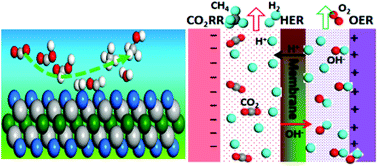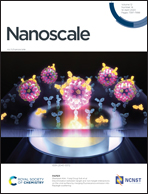High throughput screening of M3C2 MXenes for efficient CO2 reduction conversion into hydrocarbon fuels†
Abstract
The electrocatalytic reduction conversion of CO2 to produce methane (CH4) as a fuel has attracted intensive attention for renewable energy. Density functional theory (DFT) calculations with a computational hydrogen electrode (CHE) model are applied to study the hydrogenation of CO2 on the two-dimensional (2D) M3C2 transition metal carbide (MXenes) surface. It is demonstrated that the adsorbed CO2 is activated and can combine with surface hydrogen to form bicarbonate species, thus leading to more competitive selectivity for the CO2RR than the HER. All possible conversion pathways for carbon dioxide to methane are explored, and it is found that the formation of the bicarbonate (HCO2) species is energetically the most favourable reaction pathway, whereas the main intermediate of the CO2RR is HCHO. Detailed characterization of the initial activation, scaling relationships, protonation steps and electrode overpotential, together with the evaluation of the limiting potentials for several reaction mechanisms, reveals that MXene M3C2 exhibits a high catalytic performance for CO2, providing novel fuel cells.



 Please wait while we load your content...
Please wait while we load your content...